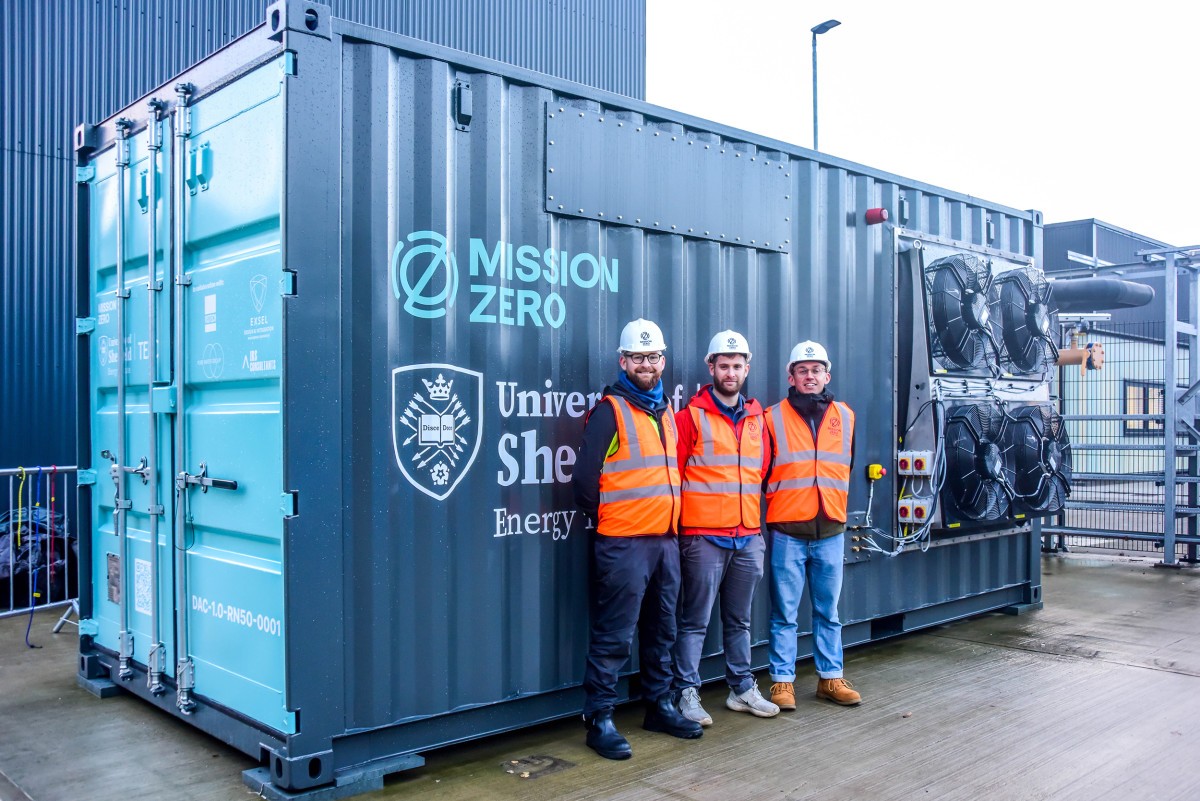
This shipping container uses water and solar power to capture CO2 from the air
LONDON : Inside a shipping container in the U.K. city of Sheffield, new technology uses water and renewable electricity to pull CO2 out of the air.
Other companies are already using “direct air capture” machines to help fight climate change. But the startup that designed the system, Mission Zero Technologies, wanted to find a cheaper, more efficient way to do it.
The team started thinking about the problem while exploring how to make fuels from captured CO2. “It’s not that we don’t know what to do with the CO2 when we get it,” says CEO Nicholas Chadwick. “You can make it into fuels, you can make it into building materials, chemicals, etcetera. You can geologically store it. But it’s getting the CO2 which is the problem: What you need to do is get it in a cost-effective way. And you need to build a gigaton-level, decentralized supply chain of CO2.”
Pulling CO2 from the air involves two basic steps—capturing it in a medium or material, and then getting it out of that material. “Most of the energy intensity and cost comes from that second step—how you get the CO2 back,” Chadwick says. “That’s often where the complexity of engineering arises, increasing energy and therefore cost.
Like other direct air capture companies, Mission Zero starts by using large fans to pull air into its device. Inside, the company repurposed cooling tower equipment to capture the CO2; in a large box, air passes over a film of water mixed with a small percentage of simple chemicals. The CO2 dissolves in the liquid. (Chadwick compares it to the carbonation inside a can of Coke, with the difference that it doesn’t fizz back out.) To remove the CO2, the company uses a process called electrodialysis that’s already used in other industries.
The process can be three to five times more efficient than other direct air capture technology, which typically uses very high temperatures to extract CO2. The amount of electricity that the new process uses can also be adjusted, which means that it can work well with renewable electricity—when there’s more solar or wind power available on the grid, and power is cheaper, the system can ramp up, and when there’s less available, it can automatically slow down. The first installation runs on both on-site solar power and renewable energy from the grid.

The CO2 should be able to compete in cost with commodity CO2, the kind sold to industries like soda manufacturers, by 2025. By the end of the decade, the company expects the cost to drop below $200 per ton. Right now, other technologies are estimated to cost between $600 and $1,000 per ton.
The system is designed to fit inside shipping containers so that it can easily be set up where it’s needed—if it’s used to make jet fuel, for example, it can sit next to the factory, with multiple shipping containers stacked up like Lego blocks to save space.
“There are lot of emissions associated with moving CO2,” says Chadwick. “So, it makes no sense if you’re generating from the atmosphere with high degrees of net negativity and then moving it over road using fossil fuels.” (Moving it by pipeline poses other risks.)
Next year, Mission Zero will deploy a system with a company called Deep Sky in Canada to capture CO2 that will be stored underground. But it also sees huge potential in using the CO2 in industry. Its first small installation in Sheffield will be used by researchers who are making sustainable aviation fuel. Another project next year will use the CO2 in building materials.
“We have a general perspective that humanity has a very unsustainable relationship with carbon,” Chadwick says. “The carbon in and of itself isn’t bad. It makes the clothes you wear, it makes the cars we drive, it powers the cars. Carbon is a good thing, but where we get the carbon from is the problem. It’s currently very unsustainable because we get it from fossil fuels. And so from a larger perspective, our goal with building this technology is actually to provide a different relationship with carbon for humanity in the future.”
